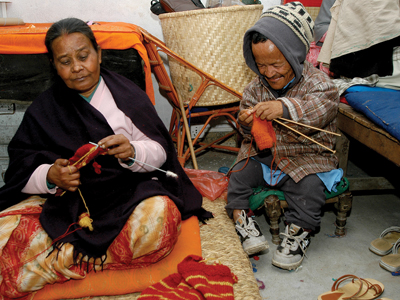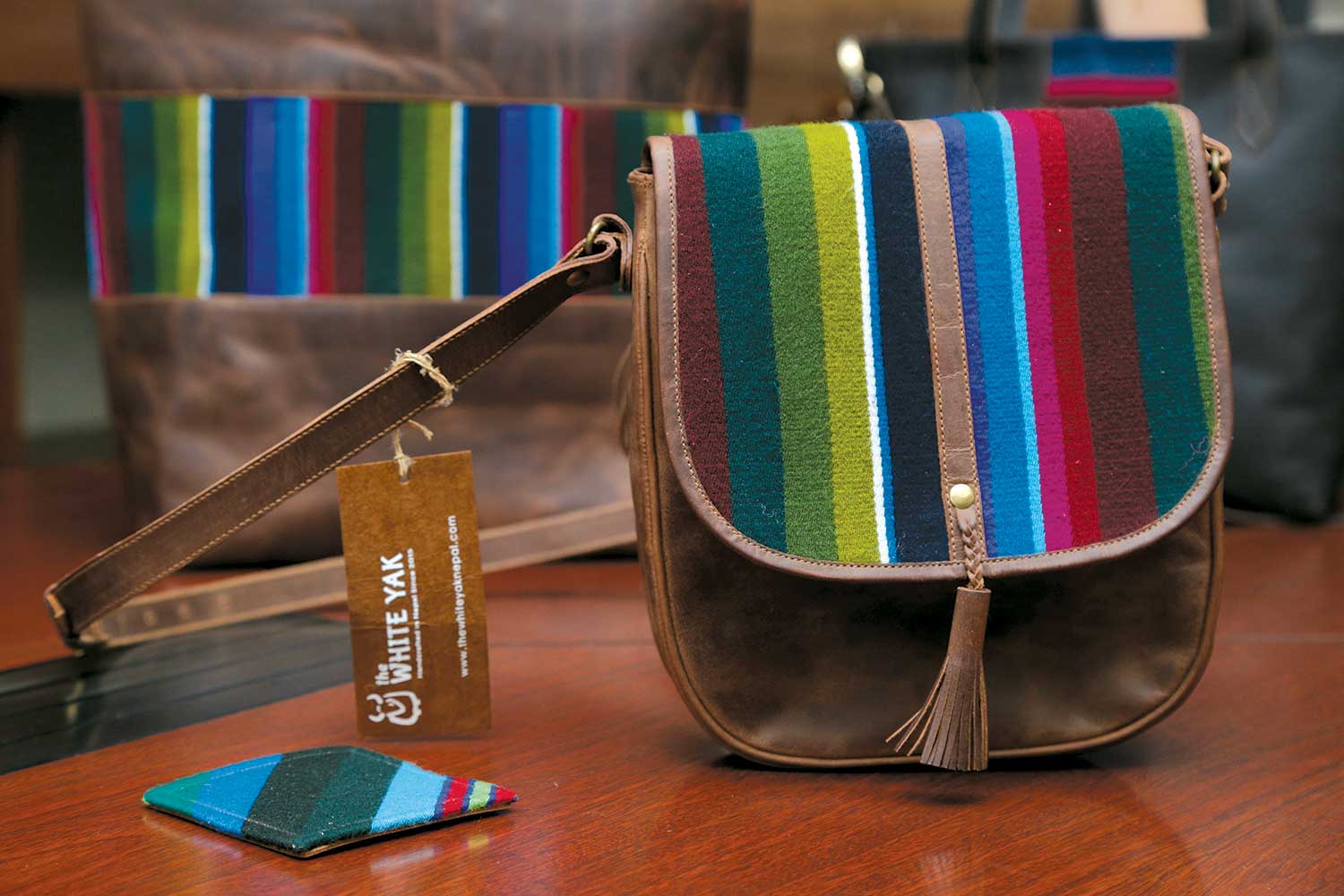Living life in dignity is one of the basic human rights that many are deprived of. In a society where abnormality is almost a social curse, many find solace at Shanti Sewa Griha, a home for those who are in need of one. An organization that started as a rehabilitation centre for leprosy patients more than ten years ago, today has opened their arms to just about anyone who turns to them for help. And they end up receiving more than they ask for: the strength to survive and hope for a better life.
 Shanti Sewa Griha at Gaushala is a welcoming and peaceful abode. In a normal afternoon, one would find women as well as men busy knitting, stitching, weaving and taking care of the young ones. Everyone in the family, who previously was homeless and ousted, is imparted with skills of some sort. Men and women carve their way to a better future and paint their dreams at Shanti Sewa Griha.
Shanti Sewa Griha at Gaushala is a welcoming and peaceful abode. In a normal afternoon, one would find women as well as men busy knitting, stitching, weaving and taking care of the young ones. Everyone in the family, who previously was homeless and ousted, is imparted with skills of some sort. Men and women carve their way to a better future and paint their dreams at Shanti Sewa Griha.
Established with the purpose to rehabilitate leprosy patients, Shanti Sewa Griha came into existence in 1992. Over the years, this non-governmental organization has reached to over a thousand homeless people. Shanti Sewa Griha works with the everyday mission to empower people so that they can one day survive independently.
Today Shanti Sewa Griha with its limitless generosity has also opened their doors to the physically challenged, children with HIV/AIDS, women with traumatic past and the elderly. Not only does it provide them basic amenities to survive but the means to help them stand on their own.
Shanti Sewa Griha has well understood that people who have been previously rejected by society need tremendous support and encouragement to reinstate themselves back in society. And without helping them acquire the skills to survive, this is next to impossible. Therefore, from the beginning, trainings such as in printing, stitching, weaving, toy making, etc. are provided in order to help them relearn the skills to carry on with normal life. Women and the elderly group participate in workshops that are organized for education and vocational training. With the remarkable level of commitment of the social workers, even the leprosy patients with deformity are motivated to create designs on paper and cloth.
Under regular guidance of the most encouraging and creative chairperson Marianne, the residents also carve out beautiful designs on silver jewelry. And it is a matter of pride for Shanti Sewa Griha (SSG) that some of the wooden furniture at their residential facility were made by polio as well as leprosy cured patients. Also, some beautifully crafted products such as cloth, bags, cards, blankets, to name a few, are gaining popularity in the local as well as international markets.
An establishment that started with only thirteen patients and four rooms, now has over a thousand residents including two hundred children. Accepting challenges and finding creative solutions, Shanti Sewa Griha gives a second chance to those with lost hopes. True to its name, Shanti Sewa Griha, is a home of peace, love and encouragement to people who have lost it all. It’s the dedication and commitment of a few driven individuals that give continuous support to the ones who need them the most.
Self Sustenance
One of the major concerns for Shanti Sewa Griha was self-sustenance. Creative ideas for survival have led them to develop an income-generating scheme which has successfully sustained the organization. They started with small time farming for basic needs, where the residents of Budhanilkantha themselves contributed. In time, the residents were trained to produce organic vegetables, which today serve a part of the vocational as well as an income generating program. It is an achievement that Shanti Sewa Griha at present owns about 13,000 sq.m land all over Kathmandu. Krishna Gurung of Shanti Sewa Griha states with pride that Shanti Sewa Griha has not bought vegetables for the past seventeen months.
Free Clinics
Shanti Sewa has been operating free clinics at Budhanilkantha and Gaushala since its inception. They are open to people who cannot afford medical attention.
Employment
Residents and non-residents who have been working at Shanti Sewa Griha are regularly paid. Unlike other employments, they get their pay regardless of whether or not they work regularly and they are given incentives if they outshine in their work.
School for regular and disabled children
Normal as well as physically challenged children go to schools and kindergarten at Shanti Sewa Griha. In 1999, a school was established at Budhanilkantha to assist those who could not afford to pay for their children’s education. Shanti Primary School offers classes from nursery till the 5th grade, with additional standards added annually.
Disabled Children’s Center was initiated to provide proper care for disabled children. This center is a home to many mentally challenged and polio-affected children. Relentless endeavors are being made to help special children lead a relatively normal life.
Free Food
The community kitchen at Gaushala is only a few minutes walk from the Shanti Sewa Griha building. Three sets of meals are prepared for almost 600 people everyday.
Training
Most children in Nepal suffer from malnutrition. Hence, Shanti Sewa Griha has taken the initiative to teach women regarding preparation of hygienic and nutritious food. At Budhanilkantha, a model kitchen is set in a typical rural village style for practical training for the women.
Budhanilkantha housing
Apart from the residential facility at Gaushala, Shanti Sewa Griha has also created a space at Budhanilkantha, a suburban area in Kathmandu. What is interesting about this place is that the houses here were built by the families of almost forty patients. It liess on a sprawling land with greenery and plantation done by the residents themselves.
Ani Choying Drolma: Life Post Covid
Covid changed the lives of most people, some for the better and some for the worse. Ani Choying Dromla took...









